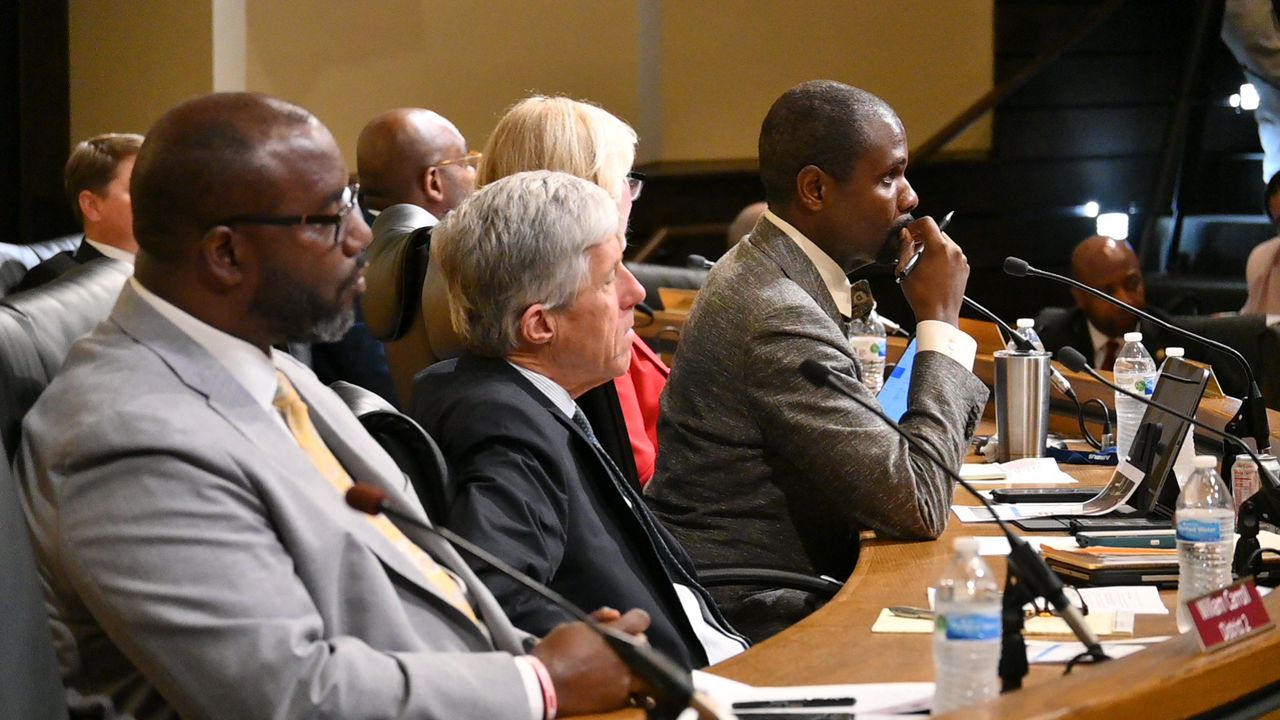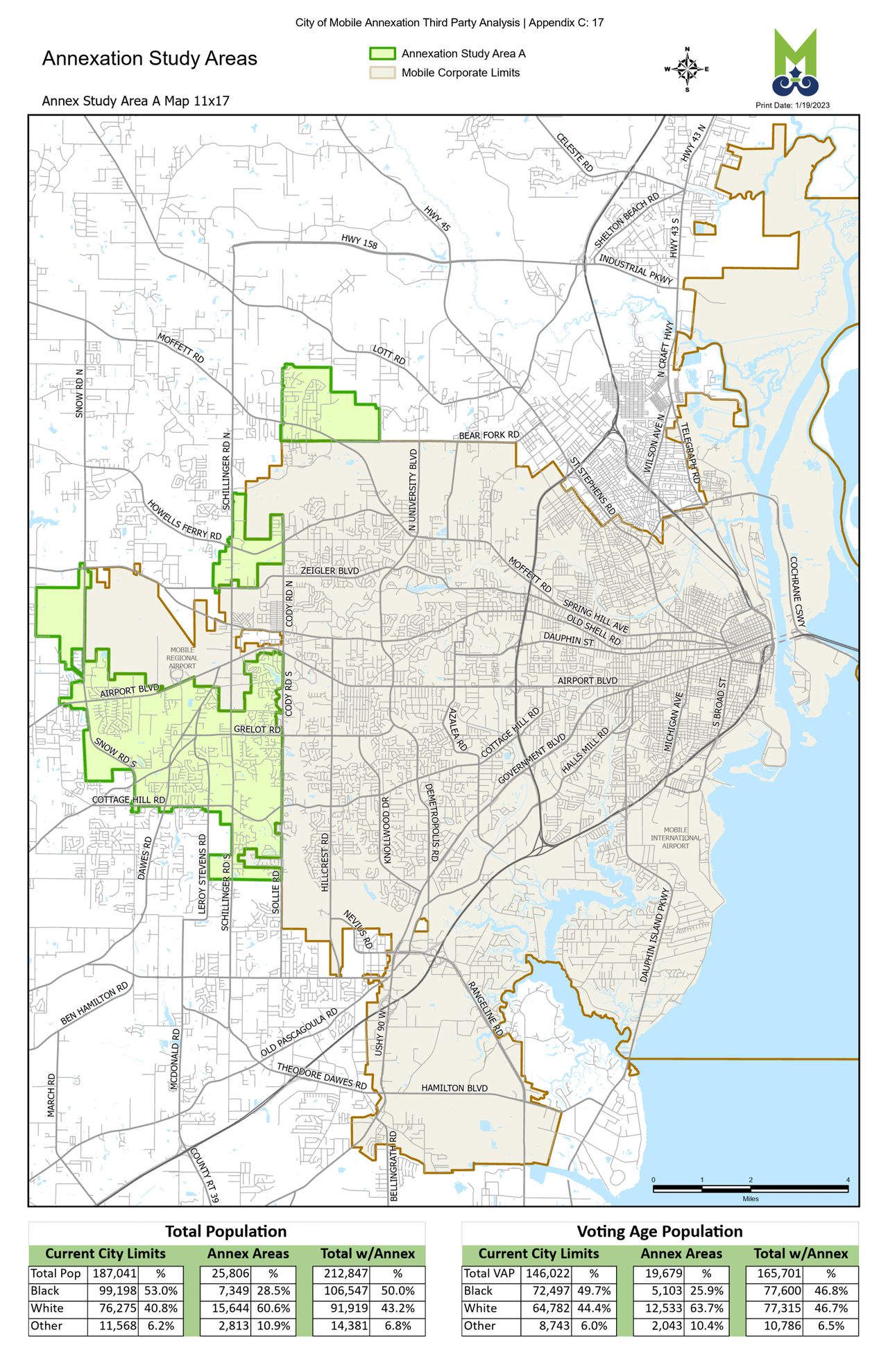Mobile City Council votes unanimously on annexation
The Mobile City Council voted unanimously Tuesday to allow more than 25,000 residents within unincorporated areas west of the city’s limits to vote on whether they want to be annexed into the city.
The decision was described by Mayor Sandy Stimpson as “historic” and one of the “most pivotal votes” a city council has taken in Mobile. It sets the stage for Mobile to become the second-largest city in Alabama, and to leap Birmingham in population for the first time since the 1900 Census.
“We are teed up to move this city forward in a very positive way,” Stimpson said.
Councilman Joel Daves called it a “once in a generation vote.”
“It was the triumph of hope over fear,” he said. “It was the triumph of progress over stagnation and the tirumph of trust over distrust.”
Related content:
If all the neighborhoods who can vote during the forthcoming special election agree on annexation, Mobile would become the second largest city in Alabama behind only fast-growing Huntsville.
The council’s vote supported four related resolutions, each which specified a section west of Mobile that would be targeted for annexation: Kings Branch subdivision north and west of Mobile near Semmes, Orchard Estates subdivision which includes neighborhoods near Schillinger’s Road North and Howells Ferry Road, the heavily populated Cottage Hills region, and an area near the Mobile Regional Airport.
Annexation Study Area A. This proposal would annex 25,806 residents into the city of Mobile. The city council will vote on four resolutions Tuesday to authorize a referendum in this area on whether or not the residents want to be annexed. (Graphic courtesy City of Mobile)
If voters in all four areas approve annexation, Mobile, which a population of 187,041 residents, will leap Montgomery (200,603 residents) and Birmingham (200,733 residents). Huntsville will remain Alabama’s largest city at 215,006.
A special election date has not yet been announced. It will be administered by the Mobile County Probate Office.
“The city isn’t passing annexation,” said Councilwoman Gina Gregory. “What are putting out today is a proposal to allow people to vote to become a citizen of Mobile.”
The vote is a reversal of a 2019 council decision to shoot down a similar annexation proposal that was anticipated to bring in 13,000 residents. That vote was 4-3 and went along racial lines with the council’s four white members supporting it, and the three Black members voting against it. It takes a five-vote supermajority to advance an annexation plan forward for a special election.
Council President C.J. Small, who was one of the “No” votes in 2019, said the difference this time around was that a third-party firm, PFM Group, conducted a study and released a report last month illustrating revenue growth from annexation. He said a similar effort was missing in 2019.
He also said the city has invested more into his majority-Black district, with improvements to parks and the Boys and Girls Club.
“I cannot sit back no longer and let my city lose integrity and keep losing citizens,” said Small.
Questions have been raised over whether Mobile will be able to maintain its majority-minority voting age population by annexing areas with a majority white neighborhoods.
If all four areas are annexed under a map called “Area A,” the city’s voting age population (age 18 and above) would go from 146,022 to 165,701.
The city’s current voting age population’s demographics, according to the PFM report, is 72,497 Black (49.7%) to 64,782 white (44.4) and Other at 8,743 (6%). Under Area A, the city would annex 19,679 people who can vote, with 5,103 Black (25.9%), 12,533 white (63.7%) and 2,043 Other.
The new voting age demographic distribution would then be 77,600 Black (46.8%), 77,315 white (46.7%), and 10,786 Other (6.5%).

The Mobile City Council listens to the public speak during the council’s meeting on Tuesday, May 9, 2023, at Government Plaza in downtown Mobile, Ala. (John Sharp/[email protected]).
Shalela Dowdy, president of Stand Up Mobile a non-profit organization that does work centered around voter engagement in the Black Community within Mobile County, said the current annexation plan will “dilute the Black vote.” and she called on the city to undergo a racial polarization study. The council initially considered doing a similar study last year, but opted not to proceed with one after council members could find agreement on what constitutes racial polarization.
Dowdy called the proposal “black suppression disguised in the rose colored glasses of annexation.”
“The four proposals does not show a Black majority will still be present,” Dowdy said. “ We have been moving backward.”
Small said the concern is with more than three-quarters of the city’s voting age population not even participating during municipal elections.
Councilman Cory Penn, who represents the largest Black district of the city, said he believes the current plan will maintain the city’s majority minority status. He also said the annexation plan, if it goes forward, will bring in additional revenues to help spur redevelopment and investments into Mobile’s inner city.
Penn referred to the PFM study, which suggests that an additional $105 million in revenues will come back to Mobile within the next two years.
“That was major to me,” said Penn, referring to the study. “We have to get more funding. We can do more in our inner city. I think that is important.”
Mobile City Councilman William Carroll said annexation is “about the future.”
“Mobile is on a precipice of one of the most golden times we’eve ever seen,” Carroll said. “The only way to do this is move it it forward and be able to grow.”
